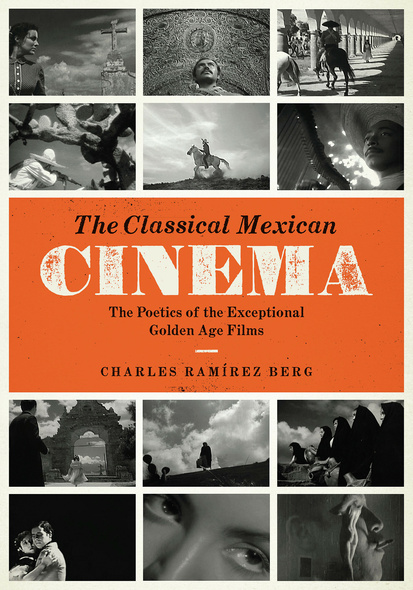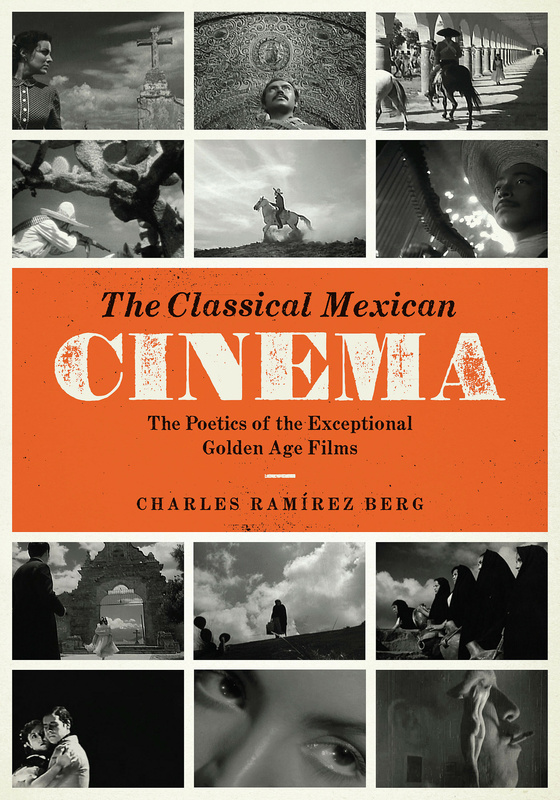The Classical Mexican Cinema
The Poetics of the Exceptional Golden Age Films
From the mid-1930s to the late 1950s, Mexican cinema became the most successful Latin American cinema and the leading Spanish-language film industry in the world. Many Cine de Oro (Golden Age cinema) films adhered to the dominant Hollywood model, but a small yet formidable filmmaking faction rejected Hollywood’s paradigm outright. Directors Fernando de Fuentes, Emilio Fernández, Luis Buñuel, Juan Bustillo Oro, Adolfo Best Maugard, and Julio Bracho sought to create a unique national cinema that, through the stories it told and the ways it told them, was wholly Mexican. The Classical Mexican Cinema traces the emergence and evolution of this Mexican cinematic aesthetic, a distinctive film form designed to express lo mexicano.
Charles Ramírez Berg begins by locating the classical style’s pre-cinematic roots in the work of popular Mexican artist José Guadalupe Posada at the turn of the twentieth century. He also looks at the dawning of Mexican classicism in the poetics of Enrique Rosas’ El Automóvil Gris, the crowning achievement of Mexico’s silent filmmaking era and the film that set the stage for the Golden Age films. Berg then analyzes mature examples of classical Mexican filmmaking by the predominant Golden Age auteurs of three successive decades. Drawing on neoformalism and neoauteurism within a cultural studies framework, he brilliantly reveals how the poetics of Classical Mexican Cinema deviated from the formal norms of the Golden Age to express a uniquely Mexican sensibility thematically, stylistically, and ideologically.
The Classical Mexican Cinema is a gorgeous book, so full of stills and frame blowups deftly illustrating Berg’s narrative that it is an immersive experience…An invaluable resource for all students and lovers of cinema, this book would also make a superb course text.
Ramírez Berg explores the roots of the industry and explains how filmmakers of the time crafted a style that was distinctly Mexican.
An ambitious book that recognizes and defines the enduring presence of a ‘Mexican’ way of producing cinematic realities. One of the greatest strengths of The Classical Mexican Cinema is that it integrates both visual and textual analysis. This approach makes the book brilliant, solid, and very attractive.
Chapter 1. Introduction: Retheorizing Mexican Film History
Chapter 2. Every Picture Tells a Story: José Guadalupe Posada's Protocinematic Graphic Art
Chapter 3. Enrique Rosas's El automóvil gris (1919) and the Dawning of Modern Mexican Cinema
Chapter 4. The Adoption of the Hollywood Style and the Transition to Sound
Chapter 5. Mexican Cinema Comes of Age: Fernando de Fuentes in the 1930s
Chapter 6. The Cinematic Invention of Mexico: The Poetics and Politics of the Fernández Unit Style
Chapter 7. Luis Buñuel in Mexico
Chapter 8. Three Classical Mexican Cinema Genre Films
Chapter 9. Conclusion: What Happened to the Classical Mexican Cinema?
Notes
Index





